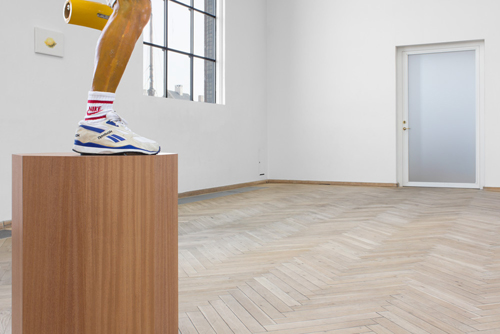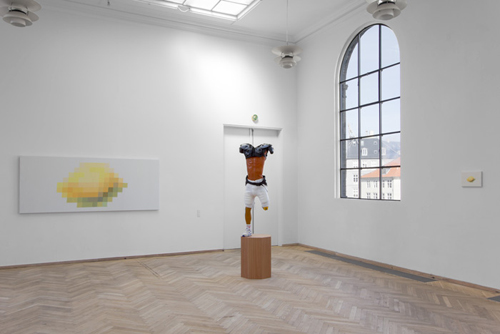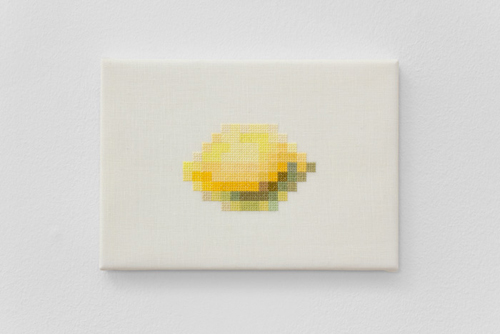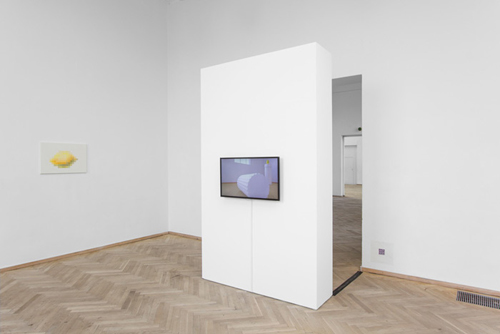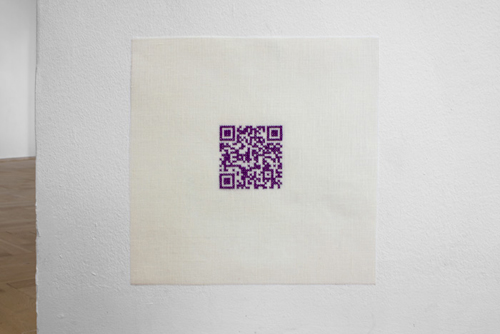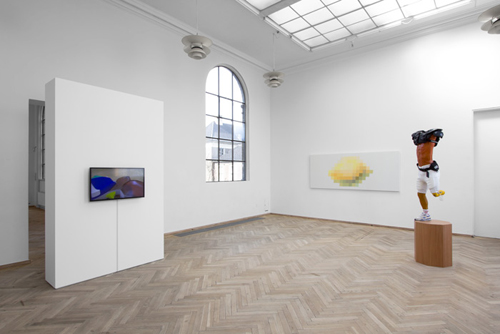Running Lemon
Solo Exhibition at Toves Salon, Charlottenborg Temporary Exhibition Space, Copenhagen 2013
Lemon
Cross stitch on linen
130 cm x 300 cm
2008
Lemon
Cross stitch on linen
120 cm x 100 cm
2008
Lemon
Cross stitch on linen
36 cm x 25 cm
2008
QR code
Cross stitch on linen
30 cm x 30 cm
2013
Virtual footnotes by Toves Salon
3D animation and embroidered QR code
Runner
Sculpture, polyester, wood
60 cm x 60 cm x 250 cm
1994
Running Lemon was a curated soloexhibition with a selection of works by Nils Viga Hausken, that spans a period of more than 20 years, and which of some is shown in a Danish context for the very first time.
Viga Hausken is especially focused on the concept of slow-time, as in opposition to the high pace of life in our society today, and have been actively defying that pace in his practice by over the last 12 years solely work with cross-stiching.
A certain tension between pop and existence, between the digital and the analogue, comes to mind when the unsharp depiction of a photographed and highly pixelated lemon is invoked; giga-pixel by giga-pixel, on a grand scale and each pixel in hundreds of cross-stiches.
Along with the embroiderys the sculpture Runner is shown – an earlier work in Viga Hauskens career – featuring a beheaded and one-legged athlete, an amputee, dressed in an ergonomic harness and frozen in time on the verge of disaster. The next step is a mythological fall into the abyss.
Nils Viga Hausken's physical work throughout the exhibition Running Lemon are accompanied and augmented by a virtual reflection of the exhibition space, a kind of digital comment- or footnote device, where reality are referenced and interconnected in a subjective layer produced by Toves Salon. By furthering associations and connotations from the specific works, their context and their inherent chronology, they form and articulate a flow of information marked by a pinpoint in the contemporary time, spirit and technology. In Toves Salons curation of Running Lemon the works doesn't hang parallell side by side, but rather they overlap in time and space as well as in meaning.'








